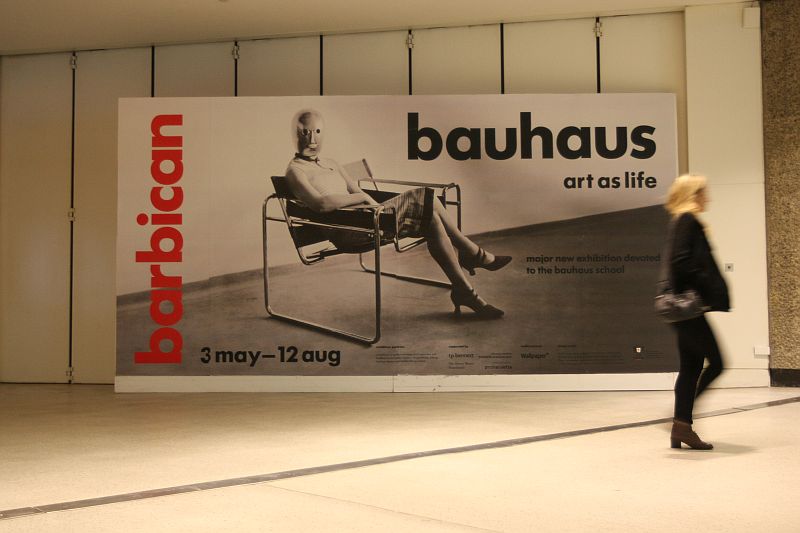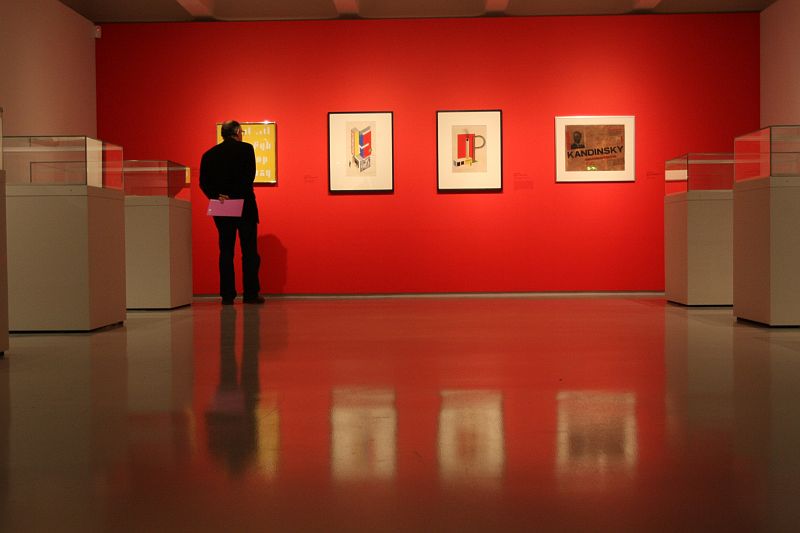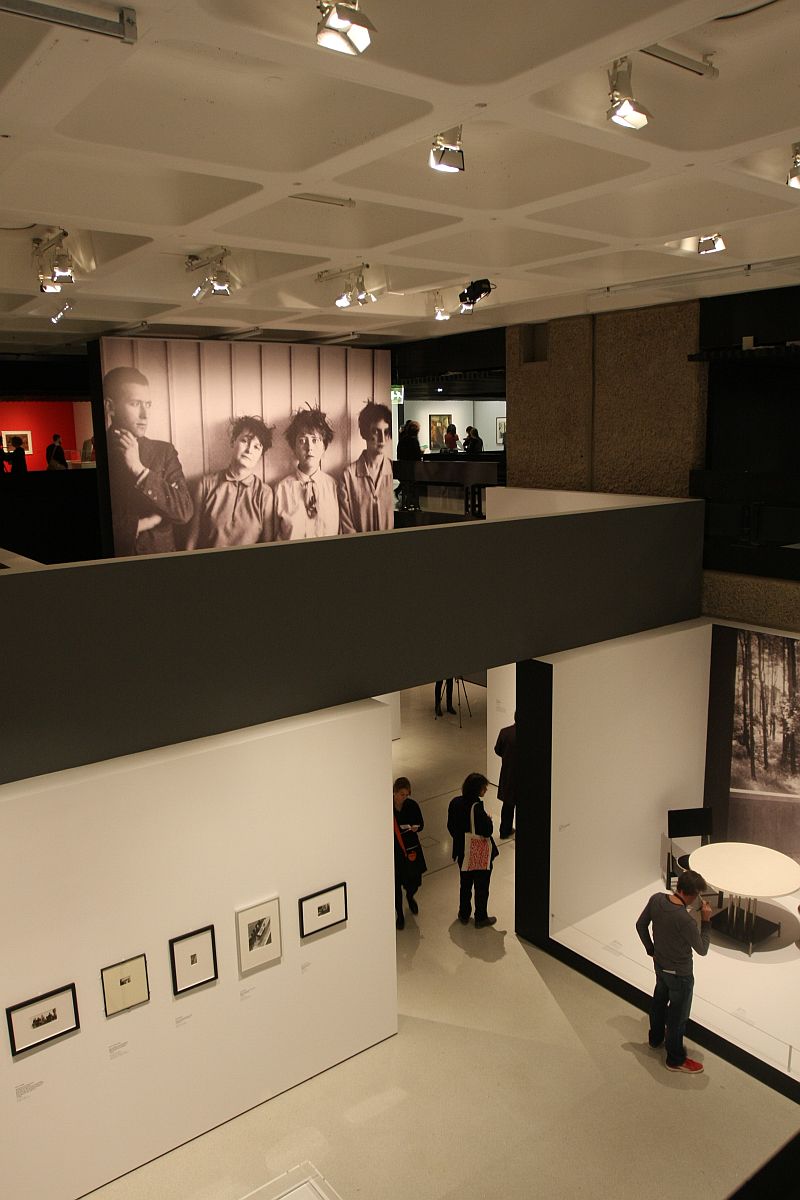Bauhaus Art as Life @ Barbican Art Gallery London: Dr. Annemarie Jaeggi
On May 3rd the exhibition “Bauhaus: Art as Life” opens at the Barbican Art Gallery London. Organised in co-operation with the Bauhaus Archiv Berlin, Stiftung Bauhaus Dessau and Klassik Stiftung Weimar, “Bauhaus: Art as Life” presents some 450 works by the likes of as Marianne Brandt, Wassily Kandinsky, Marcel Breuer, Walter Gropius et al and is the first major Bauhaus exhibition in the UK since 1968.
We’ll have a full report on the exhibition shortly. But ahead of the official opening we caught with Bauhaus Archiv Berlin Director Dr. Annemarie Jaeggi to talk about the exhibition and the role and relevance of Bauhaus in and to the UK.
(smow)blog: Firstly as a little background, did the three Bauhaus institutions approach the Barbican with the idea for the exhibition, or did the Barbican approach yourselves?
Dr. Annemarie Jaeggi: The Barbican approached us in 2009 during the exhibition “Bauhaus. A Conceptual Model” in Berlin with the request, if it would be possible to show either that particular exhibition or another Bauhaus exhibition in London in 2012.
(smow)blog: The decision was ultimately for a different exhibition. Why not just show the 2009 exhibition?
Dr. Annemarie Jaeggi: “Bauhaus. A Conceptual Model” was a very expansive exhibition and was conceived specifically to celebrate the 90th anniversary of Bauhaus. And although it did travel in a reduced version to New York, it wasn’t really practical to consider it as a permanent travelling exhibition; not least because the objects came from numerous sources, and us holding on to them, effectively on a permanent loan basis, wasn’t reasonable or fair.
So we thought “OK, let’s do things a bit differently”, and so we as the three largest Bauhaus institutions, made our collections available to the Barbican, and they then curated the exhibition. In the end some 70% of the objects come from Dessau, Weimar and Berlin and 30% from English collections in addition to items from, for example, the Centre Georges Pompidou, MoMa New York or Zentrum Paul Klee in Bern.
(smow)blog: A Bauhaus exhibition in the UK, sets a couple of obvious questions in the room. Firstly, in your opinion, did the Arts and Crafts movement play a role in the establishment of Bauhaus, or is there no real connection?
Dr. Annemarie Jaeggi: I’m not convinced it played a direct role. Arts and Crafts was very important for the re-discovery of traditional crafts, specifically a high-quality and pure form of handcrafts. And that had a great influence in Germany in terms of Jugendstil and the Deutsche Werkbund, and in that period the impulses came from England. However, I think for the Bauhaus less so, because that was much more driven by the situation in Germany after the First World War. Naturally there are common convictions, for all in terms of using crafts and manual labour as a tool to learn how one can work with certain materials, what is possible and where the limits of a material are. But also the idea of an honest use of materials; that one shouldn’t work against the properties of a material. And so these are things where one can say, yes there are parallels.
But what ultimately made Bauhaus the institution it became goes in a different direction namely to train designers, or to use the language of the day to train Formgestalter, to work with and for industry. And at that point Arts and Crafts and Bauhaus go their separate ways.
(smow)blog: And the complimentary question. If we see things correctly Bauhaus didn’t have much impact in the UK. For us one could almost speak of the UK as being the land Bauhaus forgot. Is that that the case?
Dr. Annemarie Jaeggi: Current thinking is starting to see that a bit differently. Previously it was accepted that Bauhaus had left little or no trace in the UK – that those Bauhäusler who emigrated to the UK had probably come a little too early. England was firmly rooted in its own tradition and the shift towards Modernism was very hesitant and really didn’t occur until after the Second World War. However, nowadays there is the line of thought that until now we’ve maybe focused too much on the prominent Bauhäusler. But then what about the numerous other, less well known, Bauhäusler who had to leave Germany? Bauhäusler who, in comparison to Walter Gropius or Marcel Breuer taught at some of England’s most important art colleges, and the results of their contribution to UK art and design can only really be measured after 1945. And that is something that until now hasn’t been fully researched, but which we hope to investigate further, ideally in co-operation with institutions in the UK.
(smow)blog: And so in that context, can the exhibition be seen as a good starting point for a deeper study of the UK/Bauhaus relationship?
Dr. Annemarie Jaeggi: Yes, its a wonderful opportunity to highlight how many areas there are where we need to look deeper and do more research, including areas that are of specific historical interest to the UK. And I hope that this exhibition provides a little impulse in that direction.
(smow)blog: Briefly to end, as already discussed “Bauhaus. A Conceptual Model” wasn’t suitable as a travelling exhibition. Is “Bauhaus Art as Life” more suited. Could it potentially become a travelling exhibition?
Dr. Annemarie Jaeggi: I don’t think so. Many of the objects here are very fragile, and we have, for example an awful lot of paper based exhibits which are very light sensitive. Plus one must remember the works are 80 or 90 years old, and the paper used was of truly appalling quality; the years after the First World War were very hard and miserable years and the quality of the paper reflects that. Or the textiles were dyed with natural dyes, and these obviously fade under light. And so we much prefer to organise a major show every two or three years in one location, rather than take risks with a permanent travelling exhibition.
(smow)blog: Which means the exhibition here is a one-off chance to see this collection of objects in one place?
Dr. Annemarie Jaeggi: Yes. And the last major Bauhaus exhibition in London was in 1968 to mark the 50th anniversary. And so its something unique and very special that is on show here.
Bauhaus Art as Life runs at the Barbican Art Gallery London until August 12th 2012.
Tagged with: Art as Life, Barbican Art Gallery, Bauhaus, Bauhaus Archiv Berlin, Dr. Annemarie Jaeggi


